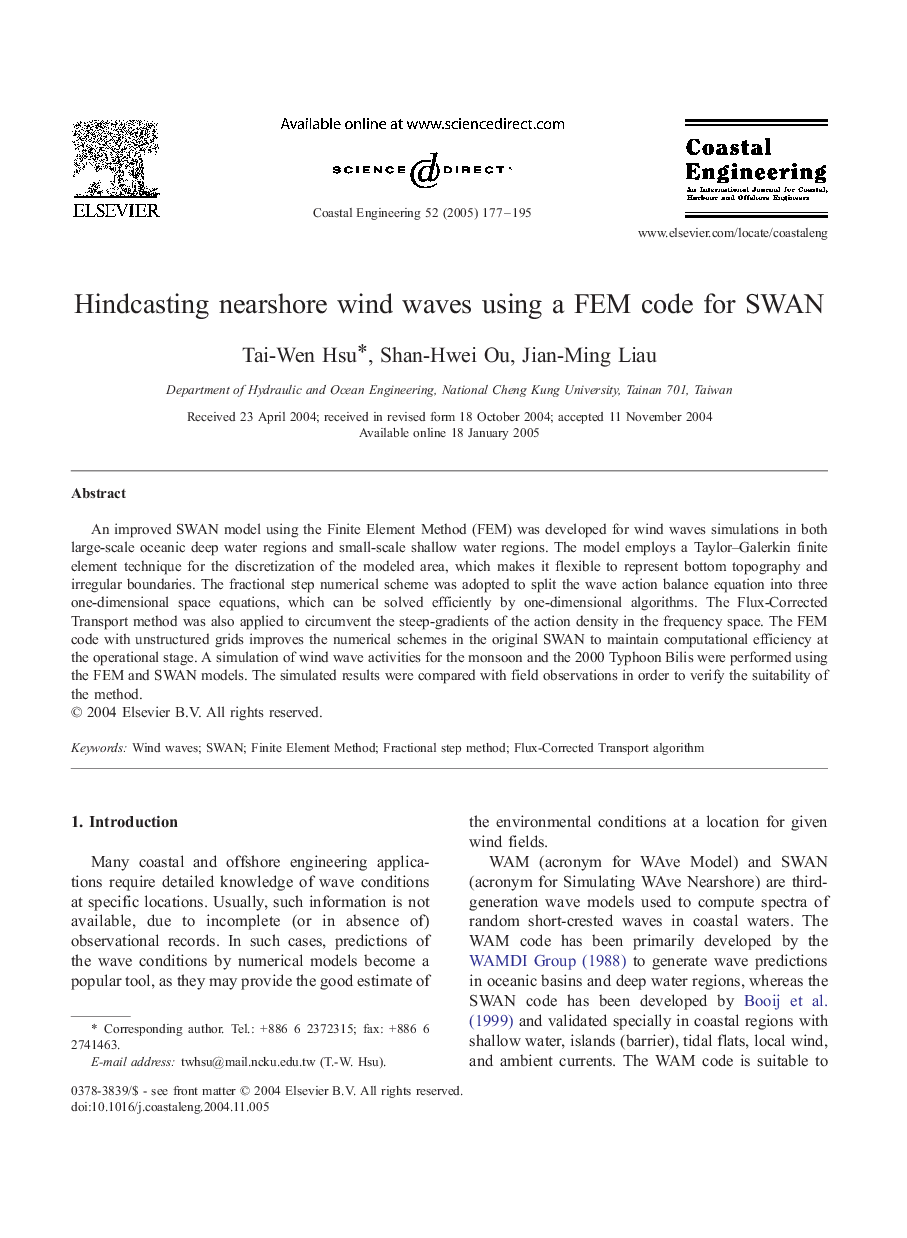| Article ID | Journal | Published Year | Pages | File Type |
|---|---|---|---|---|
| 10682017 | Coastal Engineering | 2005 | 19 Pages |
Abstract
An improved SWAN model using the Finite Element Method (FEM) was developed for wind waves simulations in both large-scale oceanic deep water regions and small-scale shallow water regions. The model employs a Taylor-Galerkin finite element technique for the discretization of the modeled area, which makes it flexible to represent bottom topography and irregular boundaries. The fractional step numerical scheme was adopted to split the wave action balance equation into three one-dimensional space equations, which can be solved efficiently by one-dimensional algorithms. The Flux-Corrected Transport method was also applied to circumvent the steep-gradients of the action density in the frequency space. The FEM code with unstructured grids improves the numerical schemes in the original SWAN to maintain computational efficiency at the operational stage. A simulation of wind wave activities for the monsoon and the 2000 Typhoon Bilis were performed using the FEM and SWAN models. The simulated results were compared with field observations in order to verify the suitability of the method.
Related Topics
Physical Sciences and Engineering
Engineering
Ocean Engineering
Authors
Tai-Wen Hsu, Shan-Hwei Ou, Jian-Ming Liau,
